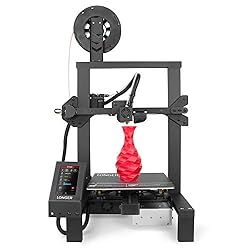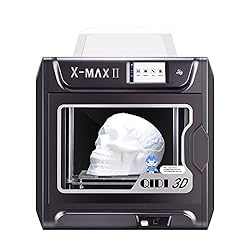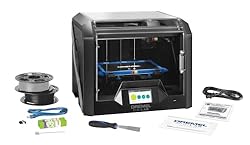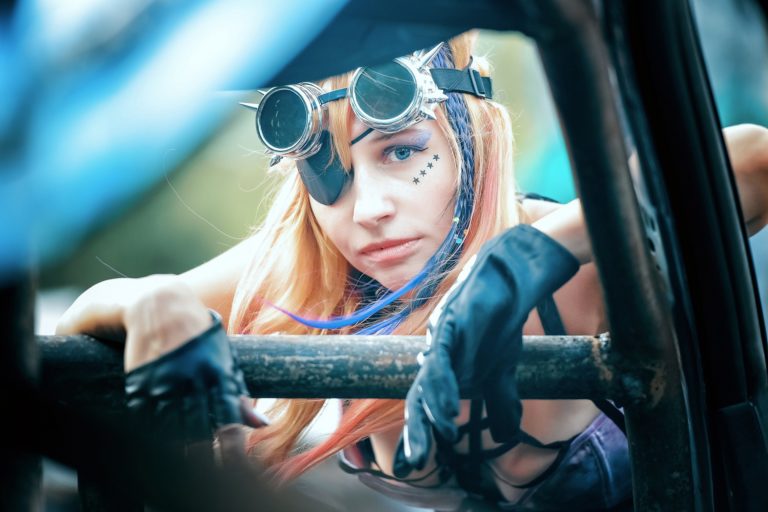The Best 3D Printer for ZBrush | Top Picks + Buyers Guide
3D printing is becoming more and more popular as time goes on. The hobby allows those to make models and items of practically anything they want. Whether it be a model of their favourite fictional character or a handy little tool they need urgently. The uses and applications for 3D printing are numerous and plentiful. So it wouldn’t be a bad idea to go get stuck in with it right now. There are tons of printers out there and a lot of them do a great job at printing in high quality. So you aren’t really stuck for choice, but that’s also kind of the problem. Learn about your options with our Best 3D Printer for ZBrush Guide.




Table of Contents
Best 3D Printer for ZBrush Guide
The problem is trying to figure out where to begin with it all. 3D printing is a pretty daunting process to look at if you know nothing about it. The printer itself is only half the battle too, which is exactly why we’ve decided to put together this list to help you out with your 3D printing journey. In this article we’re going to be covering some of the best 3D printers on the market and we’ll be covering a popular and easy way to create 3D models with ZBrush! So, let’s jump right in to our list for ‘
Monoprice MP Cadet 3D Printer
- Resolution – 50 Microns
- Volume – 9” x 4.1” x 3.9”
- Weight – 12.04lbs
- Connections – USB, Wi-Fi
Our first option on this list is a fantastic option for those who haven’t yet begun their 3D printing adventures. We’ve gone for this Monoprice Cadet 3D printer for its small form factor and its ease of use. This printer is very lightweight and the smallest on this list. Weighing in at 12.04lbs, this printer is perfect for those who may need to move their printer around a lot, or for those who don’t want to deal with heavy machinery. This printer is halfway between being an enclosed unit and an open-faced unit. The printing bed is inside the box but there are no panels or doors to protect the print when it’s being made. It does look quite odd at first glance but this is a pretty unique form for a printer and it looks pretty cool.
In terms of how much space you get with this printer, unsurprisingly it isn’t much. With a build volume of 3.9” x 4.1” x 3.9”, you won’t be able to build anything that is much bigger than an apple. So those who are experienced printers might feel like they’re pretty limited by that. Though for those who have no experience in 3D printing this is a good start to get your foot in the door. Other notable aspects include the USB and Wi-Fi connections, giving you some options over how to send your file to the printer. The setup for the printer is also very easy and is practically ready to print within a few minutes after unboxing. Overall this is a fantastic option for those who are new to 3D printing, but those who have experience might want to look elsewhere on this list.
Pros:
- Small Form Factor
- Portable
- Good Build Quality
Cons:
- Small Build Volume
- Not for Experienced Printers
LONGER LK4 3D Printer
- Resolution – 100 – 400 Microns
- Volume – 8.7” x 8.7” x 9.8”
- Weight – 9lbs
- Connections – USB, SD Card
Next up, we went for a printer that is a small step up from our last choice, yet it’s still tailored to those who lack printing experience. We’ve gone for this LONGER LK4 printer for its accessibility and great build quality. Looking at it. It’s pretty different from our first choice, with it just being a black, metal frame that supports the bed and the filament nozzle. Making this an open-faced 3D printer with zero protection for the prints as they’re being made. This does mean that there are some safety issues here but as long as you know the risks you should be good. What you get with these kinds of printers normally, is more build volume.
In this case, we’ve got 8.7” x 8.7” x 9.8”, worth of space and that’s actually quite a bit. It’s around a sort of medium size for 3D printers and you’ll be able to build quite a bit with it. The build quality here is also very good, allowing you to make some pretty detailed builds that’ll look good and stay strong. Other nice things about this printer include the great 4,3” touchscreen that has a clear display that allows you to navigate it easily.
The assembly time here is also pretty short, taking around 30 minutes to put together completely. Though one thing to point out is how the listing notes that this printer is ultra-quiet, when in fact it’s just as loud (if not louder) than most other printers. Disappointing to place that there but the printer itself has enough quality and performance to alleviate that somewhat. If you’re starting out with 3D printing, this is a fantastic option to go with.
Pros:
- Good Build Quality
- Great Touchscreen
- Lightweight
Cons:
- Not Enclosed
- Noisy
FlashForge 3D Printer
- Resolution – 100 – 500 Microns
- Volume – 9” x 5.8” x 5.9”
- Weight – 24.3lbs
- Connections – USB, SD Card
This next option on our list is for those who probably have a little more experience with 3D printing and want to take the next step in their journey. We’ve gone for this FlashForge printer for both it’s great build quality but also its ease of use. This is an enclosed unit made out of black metal, with a transparent panel on the front for access to the printing bed and a plastic lid for access to the filament nozzle. Visually this is a very clean looking printer, with no fancy bells and whistles. In terms of build volume, we’ve got 8.9” x 5.8” x 5.9” of space. Which isn’t massive but it’ll still offer you plenty of room to make some pretty impressive models.
The other notable aspect of this printer is its portability. Weighing in at 24.3lbs, this printer is good for those who need to be able to move their printer around a lot. Apart from that, the main thing that this printer offers to you is great quality printing in an accessible way. The process of setting up and printing is extremely easy and the extra benefit of both USB and SD card support makes it even easier. In a way, this is another fantastic choice for beginners in the printing world who want to go a step further with their printer. The only real downsides to this printer are the lack of a touchscreen, instead utilising buttons to operate its menus. It also has pretty poor viewing angles for watching the actual printing process. But if you can move past that, this is a fantastic printer.
Pros:
- Small Form Factor
- High Print Quality
- Easy Setup
Cons:
- Lack of Touchscreen
- Lack of Viewing Angles
QIDI TECH Large Size
- Resolution – 50 – 400 Microns
- Volume – 8″ x 9.8″ x 11.8″
- Weight – 61.7lbs
- Connections – USB
Our next printer is another step up and is great for those who want to make large models with great quality. We’ve gone for this QIDI TECH printer for its large build volume along with the quality it can achieve. This is really the option for those who have experience in 3D printing and have decided that they want a printer that can really take their work to the next level. With a build volume of 11.8″ x 9.8″ x 11.8″, this is able to make some pretty big builds. Visually this printer is fairly simple, an enclosed unit made out of dark grey metal. Now due to its size, this does mean that the printer is pretty heavy. Weighing in at 61.7lbs, which might be a bit too much for some.
This being an enclosed unit it also does suffer from the issue that affected our last option too. The viewing angles here are pretty poor and they just don’t let you see much of the action, which for some can be pretty annoying. Though it isn’t all bad since this printer has some nice features too. The touchscreen display here is 5” and looks nice and crisp. The size allows for easy navigation and should give you an easier time overall.
Ultimately this is a printer for those who perhaps do a lot of printing already or for those few who want to start printing with the best of the best. The weight is going to be an issue if you want to move your printer around a lot but if you plan on leaving it where it is, it’s a non-issue. The quality of the printing here and the size you can work with are aspects that set this printer ahead of the rest.
Pros:
- Large Touchscreen
- High Print Quality
- Easy Setup
Cons:
- Heavy
- Lack of Viewing Angles
Dremel DigiLab 3D45
- Resolution – 50 – 400 Microns
- Volume – 10” x 6” x 6.7”
- Weight – 42.8lbs
- Connections – USB, Wi-Fi
Our final option on this list is for those who value quality above all else and want a printer that is going to give them just that. We’ve gone with this Dremel Digilab 3D45 for a ton of reasons, but mainly its quality builds and ease of use. Visually this printer looks pretty simple, an enclosed unit made out of black metal with access panels on the front and the top. It’s got a build volume of 10” x 6” x 6.7”, which isn’t the largest on this by any means, but the priority here isn’t on quantity, it’s on quality. Quality is exactly what you’re getting here too, this printer makes exceptional models that both look great and are strong and sturdy.
This being another enclosed unit, you’re probably expecting some pretty poor viewing angles again. You’d be right to think that but the panels are a little bigger on this printer so that issue isn’t as bad as on the other printers. But the biggest feature that aids with watching the printing process is the built-in camera that outputs in HD. It connects to your phones and allows you to remotely watch the process which is really neat and is great for those who like to keep an eye on their printing.
It also comes with a nice 4.5” touchscreen which makes fiddling with the printer nice and easy. All in all, this is a fantastic, high-end printer which offers a lot of nice features for experienced printers. It’s an excellent option for those who want to take their printing to that next level.
Pros:
- Fantastic Build Quality
- Great Built-in Camera
- Great Touchscreen
Cons:
- Heavy
- Poor Viewing Angles
See Also: The Best 3D Printer for Nerf Guns
Buying Guide
If you’ve been through the list and you still have no idea about what printer you want to get, don’t worry. In this next section we’ll give you some advice and tips to help you out and make sure you make the right choice.
ZBrush System Requirements
ZBrush is one of the most popular forms of CAD software that you can use for 3D printing. A lot of printers out there use it and it’s a pretty reliable piece of software. The best part is that the requirements to make use of it on your PC aren’t that demanding either. Here are the specs:
- OS: 64-bit editions of Windows Vista or newer.
- CPU: Intel i5/7/Xeon technology or AMD equivalent.
- RAM: 8 GB required for working with multi-million poly models. (16+ GB preferred.)
- HDD: 100 GB of free hard drive space for ZBrush and its scratch disk. (SSD drive highly recommended.)
- Pen Tablet: Wacom or Wacom compatible. (WinTab API.)
- Monitor: 1920×1080 monitor resolution or higher with 32-bit color.
- Video card: Most cards manufactured 2008 or newer. Must support OpenGL 3.3 or higher.
If you already own a machine like a gaming PC it is very likely that you’ll be able to run ZBrush and can get started with it right away. If you don’t quite meet these specifications don’t worry! It shouldn’t cost you too much to upgrade your machine in order to be able to use this software. Though there are some things to know when going in with this software. Firstly it isn’t free and does require you to pay around $40 a month. Fortunately there is a free trial period that lasts a week so you can try it out and see if you like it.
Buy the printer that’s right for you
Printers come in all shapes and sizes and they’re all designed for different people. So don’t automatically go for the most expensive printer you can find simply because it’s the ‘best’. Think about what you’re going to be using the printer for and get a printer that’s in line with that. If you intend on making models that are pretty small then you don’t need a massive printer. But if you intend on making some pretty big models, you’re going to need a printer with a higher build volume. It’s important to look around the market and find the printer that meets your exact needs. Plus if you’re a beginner, you should pay extra attention to this tip since you don’t want your first step on this journey to be a bad one.
Buying Tips:
- Pay attention to the type of printer you’re getting. Make sure you know the difference between filament (FDM) and resin (SLA) printers. As the experiences you’ll have with both of these will be wildly different.
- Resin printers are often much harder to use and prepare for while also being more expensive. Though they also usually print at a higher quality. These kinds of printers are definitely for more experienced printers who know what they’re doing.
- Some printers use their own proprietary types of filament and others are able to use almost any kind of filament. Make sure to check which your chosen printer supports so that you can always find the cheapest deals on printing materials.
- If you already own a printer and are looking to upgrade, make sure that the experience with the new printer is going to be a better one. Often you can find a printer that seems to be better, but due to the resolution or the quality of the printer itself, you might find it offers a worse experience.
Verdict – The Best 3D Printer for ZBrush
That’s that for our list of The Best 3D Printer for Zbrush. Hopefully, it’s helped you out on your journey of getting started with 3D printing. Don’t forget to let us know if it’s done just that and thanks for reading!











